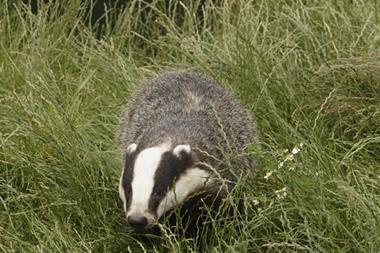
The government will not roll out badger culling across the country until changes have been made in the existing cull areas of Gloucestershire and Somerset, Defra secretary of state Owen Paterson has said.
Pilot culls in the two areas last year had thrown up a number of lessons on the humaneness, effectiveness and safety of culling and these needed to be implemented before a further rollout could be considered, Paterson told MPs today as he announced the government’s strategy for making England free from bovine tuberculosis by 2038.
Paterson’s announcement that a nationwide rollout had been put on hold was described as a “humiliating climb-down” by Defra shadow secretary Maria Eagle, but Paterson insisted “it has always been clear there will be lesson to be learned” from the cull pilots.
“It is crucial we get this right. That is why we are taking a responsible approach, accepting recommendations from experts to make the pilots better”
Owen Paterson
“It is crucial we get this right,” he said. “That is why we are taking a responsible approach, accepting recommendations from experts to make the pilots better.”
He stressed the government remained committed to culling and would roll out culls to further areas once the current culling regime had been “perfected”. Bovine TB was “the most pressing animal health problem in the UK”, Paterson said, warning it was a “devastating” disease that threatened the £6.16bn UK cattle industry. “It’s vital that farmers, vets, non-government organisations and politicians work together to free England of TB.”
Paterson also announced plans to launch badger vaccination projects around the edge of the areas affected by bovine TB to create “a buffer zone of TB immunity”, but stressed this would not address the spread of TB from badgers already infected with the disease.
A report by an independent expert panel (IEP) on the cull, which was published officially today by Defra but leaked to the press last month, found last year’s pilot culls fell short of government targets in a number of key areas. For example, the government wanted at least 70% of badgers to be culled during the course of a six-week cull, but the IEP found less than 50% of badgers were removed.
The IPE also assessed how humanely badgers had been culled and found between 7.4% and 22.8% of badgers that had been shot were still alive after five minutes. “We are concerned at the potential for suffering that these figures imply,” it said.
Bitterly disappointed
The NFU said farmers would be “bitterly disappointed” that the culls were not being rolled out beyond the two pilot areas for now.
“For our beef and dairy farmers, TB remains a terrible disease which is having a huge impact on their cattle and their farm business,” said its president Meurig Raymond.
“Statistics released by Defra show there were 4,815 new herds infected with TB in 2013 in Great Britain, with 32,620 cattle slaughtered in an attempt to control the disease. As today’s strategy sets out, it is hugely important that any cattle controls go hand in hand with measures to tackle the disease in badgers. And culling must play a part in that where TB is rife.”











2 Readers' comments